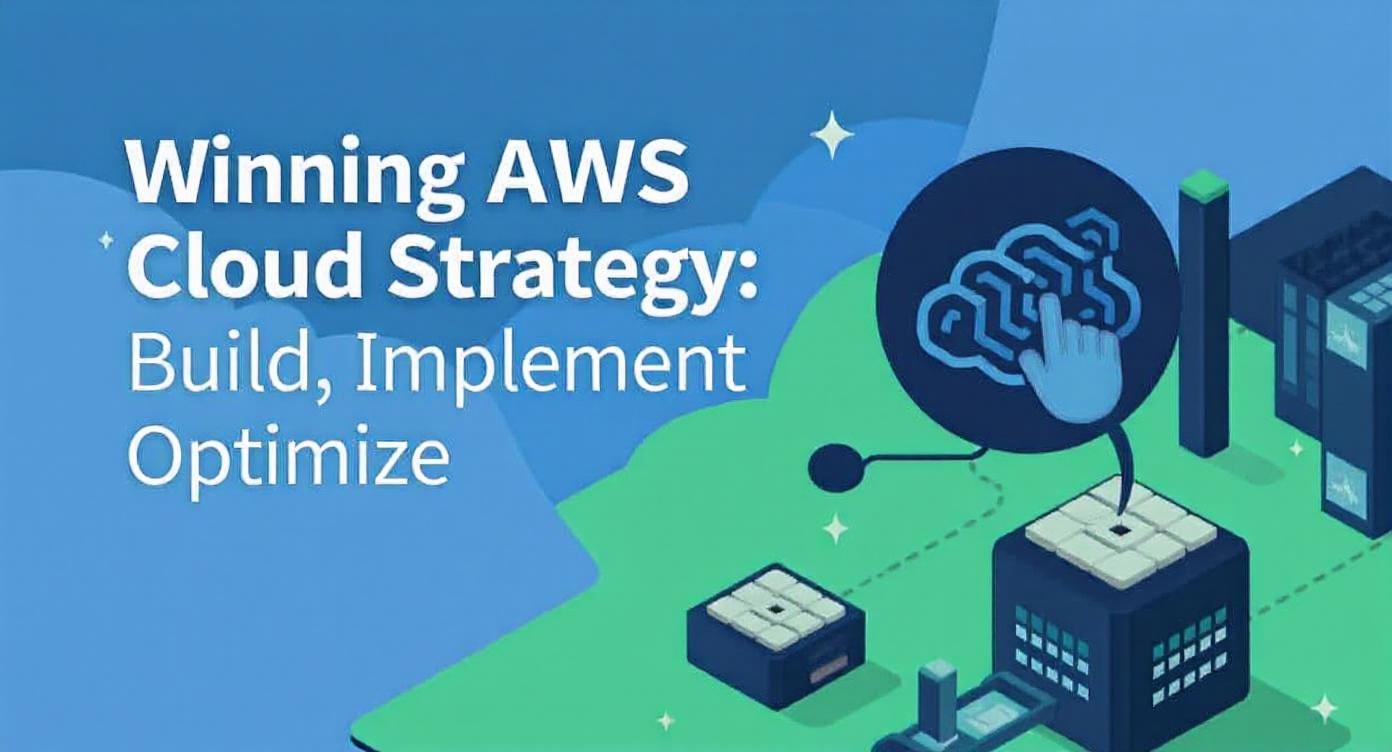
Winning AWS Cloud Strategy: Build, Implement, Optimize
The journey to cloud transformation requires more than simply migrating workloads to AWS. A successful cloud strategy AWS implementation demands careful planning, strategic thinking, and a comprehensive understanding of how cloud services align with your business objectives. Organizations that approach AWS with a well-defined strategy see 3.6 times better infrastructure efficiency and significantly reduced operational costs compared to those who migrate without proper planning.
Understanding the Foundation of AWS Cloud Strategy
Building a winning cloud strategy begins with understanding that AWS is not just a technology platform but a business enabler. Your AWS planning guide should start by aligning cloud initiatives with specific business outcomes rather than focusing solely on technical specifications. Here, Cloud Strategy and Consulting Experts can help you build a plan that actually works.
The most successful AWS implementations follow a framework that considers six core principles: trust, enablement, enterprise risk management, capability development, cost-benefit analysis, and accountability. Each principle serves as a pillar that supports your overall cloud transformation journey and ensures that technical decisions align with business strategy.
Top Tips for a Winning Cloud Strategy in 2025
In 2025, a winning cloud strategy for AWS is not about jumping on the trends bandwagon; it is more about formulating a comprehensive plan that takes into account the infrastructure, readiness, and native capabilities. Here are some tips that will help you in executing the perfect AWS strategy:
Conducting a Comprehensive Cloud Readiness Assessment
Organizations should first carefully evaluate their present situation and specify their desired future state before starting with AWS services. Your readiness evaluation should cover technical readiness, including integration requirements, data dependencies, and present architectural trends. Equally crucial is determining organizational readiness, which encompasses an assessment of team skills, change management proficiency, and cultural elements that possibly affect cloud adoption effectiveness.
Designing Your Multi-Phase Migration Strategy
Following the cloud strategy AWS 7Rs framework: Rehost, Refactor, Rearchitect, Replatform, Repurchase, Retire, and Retain, a well-structured migration approach framework offers a methodical means of reviewing every request and deciding the best migration plan based on business value, technical complexity, and resource limitations. Begin with low-risk, high-value uses that can show quick wins and help the company build trust in cloud capabilities.
Establishing Robust Governance and Security Frameworks
In AWS, security calls for a shared responsibility paradigm in which you protect your applications and data while AWS protects the infrastructure. This entails putting in place network security measures, comprehensive identity and access management via AWS IAM, and data encryption both at rest and in transit. Regular security audits using tools like AWS CloudTrail and AWS Config assist in retaining compliance and spotting possible flaws before they develop into risks.
Optimizing Costs and Performance Continuously
Using AWS Cost Explorer and AWS Budgets to automatically monitor costs, successful organizations spot spending trends and find optimization possibilities. Such as reducing operational expenses by right-sizing instances, using Reserved Instances for predictable workloads, and applying auto-scaling for variable demand. Monitoring with AWS CloudWatch and application performance insights using AWS X-Ray helps pinpoint bottlenecks and improve possibilities in your AWS planning guide.
Building Cloud-Native Capabilities and Culture
Effective AWS transition calls for internal development of fresh skills. This covers upskilling current teams on AWS services, using DevOps techniques, and embracing cloud-native development methodologies. Infrastructure as Code using AWS CloudFormation, AWS CDK, or Terraform helps to produce version-controlled, repeatable infrastructure deployment that lowers human error and increases consistency.
Measuring Success and Continuous Improvement
A successful cloud strategy on AWS has defined metrics for tracking success and ongoing improvement processes. Key performance indicators should encompass technical metrics like system availability, performance, and security posture, as well as business metrics such as time-to-market improvement, cost savings, and innovation velocity. Frequent strategy reviews help your AWS implementation to match shifting corporate demands and make use of newly available service features.
Partnering with Cloud Strategy and Consulting Experts
Building a winning cloud strategy on AWS requires thoughtful planning, systematic implementation, and ongoing optimization. Organizations that approach AWS strategically rather than tactically position themselves for long-term success in the cloud-first economy.
While AWS provides extensive documentation and support resources, many organizations benefit from partnering with experienced Cloud Strategy and Consulting Experts who can provide guidance, accelerate implementation timelines, and help avoid common pitfalls.
If you are looking for a cloud services management solution, Forged Concepts provides Cloud Strategy and Consulting Experts, unique to your specific cloud infrastructure needs. Contact us to get started today.